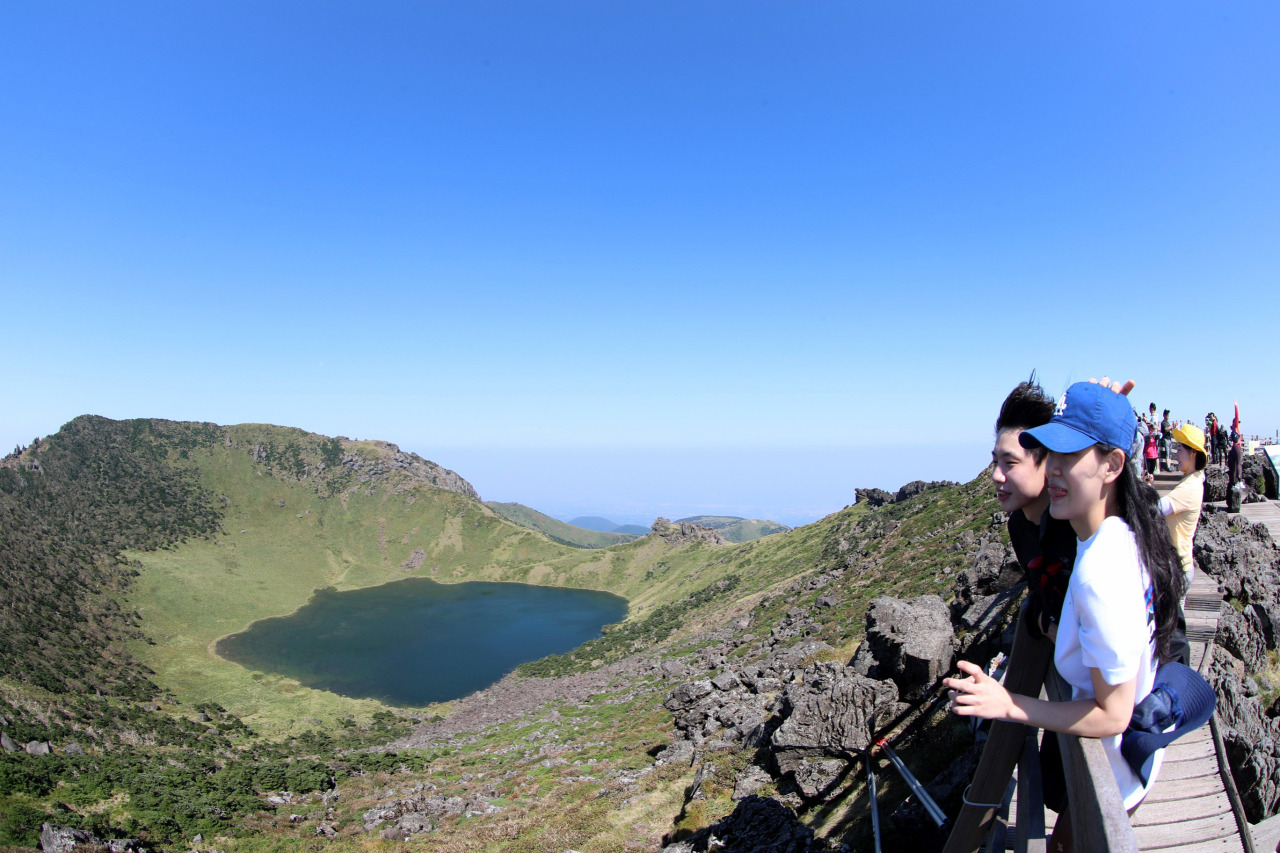
Photo shows tourists on Mt. Halla, Jeju, on a September weekend. (Yonhap)
Health authorities say the upcoming national holiday will pose the biggest challenge yet for their disease containment efforts, with millions of South Koreans expected to hit the road for Chuseok between Sept. 30 and Oct. 4.
Popular vacation towns around the country are once again on alert over an influx of travelers potentially bringing the novel coronavirus with them.
“Jeju has been relatively spared by the coronavirus due to ramped-up security around its airports and seaports. We intend to keep it that way,” said the island province’s Gov. Won Hee-ryong on Monday. With only 58 coronavirus cases to date, according to the latest official tally, Jeju accounts for less than 1 percent of the nationwide total.
“Chuseok will likely be the biggest challenge facing Jeju this fall,” Won said.
As border restrictions in place in most countries have put a damper on international travel, the southern island is a prime destination for vacationers looking to travel domestically.
“Do not travel if you are sick, or have been around someone who is,” Won said in a message to prospective visitors. The Jeju governor has made similar pleas ahead of every holiday since the pandemic started.
Warnings from public authorities appear to have gotten through. Data shows that the summer vacation season was slow to take off, with the number of beachgoers down by 60.3 percent compared with last year.
Even those who decide to travel are doing so in coronavirus-conscious ways, according to a 28-year-old Seoulite who has been to Jeju twice since the disease appeared in the country.
“I think most people are aware of the risks and choosing to spend the holidays responsibly,” he said. “On both trips, I tried to limit my itinerary to the hotel, the rental car and some remote spots around the beaches.”
Health officials recommend staying home over Chuseok and forgoing nonessential outings and gatherings.
“But if you must travel, make it safer by complying with the basics -- face masks, social distancing and hand hygiene,” said senior health official Yoon Tae-ho in Friday’s news briefing.
Larger waves of infections could arrive before the winter sets in, said Kwon Jun-wook, the deputy chief of the Korea Disease Control and Prevention Agency, warning against complacency.
“The summer resurgence should serve as a cautionary tale that the virus can spread rapidly regardless of the season,” he said. “A lack of precautions over Chuseok or at any time may easily lead us back to new outbreaks.”
Korea added 153 more cases -- 145 locally transmitted and eight imported -- in the 24 hours ending Thursday at midnight, pushing the cumulative number of reported cases to 22,657.
Five more patients died. So far, there have been 377 known deaths related to COVID-19, which puts the overall fatality rate at 1.65 percent. For those over 80, the rate is 20.6 percent.
Health authorities worry that hospitalizations and deaths could increase in the weeks to come. Close to 40 percent of people with active cases are 60 or older. Patients aged 60 or above make up 88 percent of the 150 patients currently receiving intensive care treatment.
As of Thursday, 92.4 percent of the country’s 518 intensive care beds were full, leaving only 39 available. At designated coronavirus hospitals, whose combined bed capacity is 4,120, the occupancy rate was 34.4 percent.
The number of recoveries reached 19,771, up 228 from a day prior, bringing the recovery rate to 86.7 percent. In late June, the bar for discharging patients was adjusted to free up beds. Patients who remain free of symptoms for 10 consecutive days after diagnosis are deemed officially recovered and released from medical care.
Korea has carried out 2,206,365 tests since Jan. 3. This translates to around 43,000 tests performed per million people. Of all tests taken, around 1 percent yielded positive results.
By Kim Arin (
arin@heraldcorp.com)






